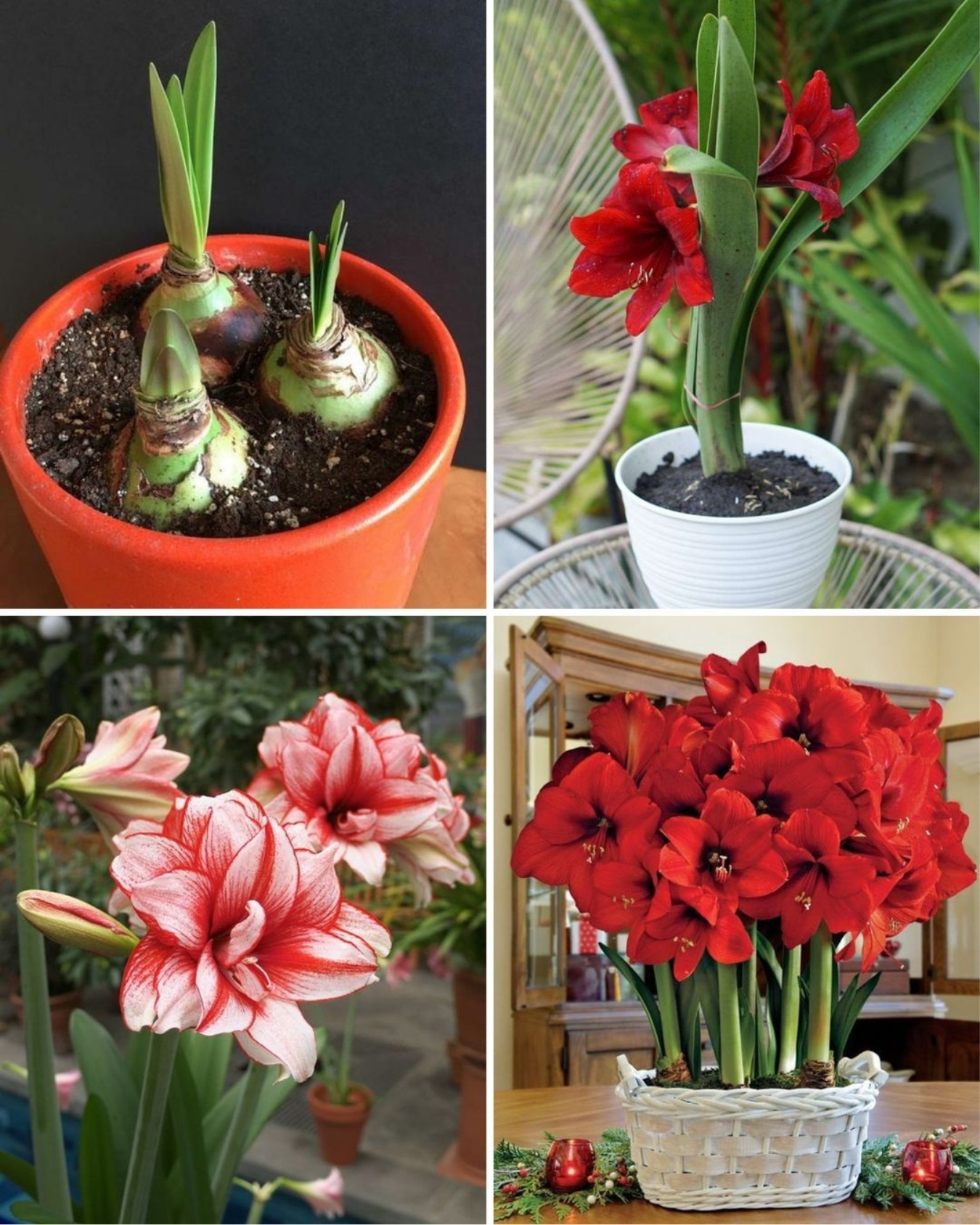
Amaryllis (Hippeastrum) is a beautiful, showy flower that can brighten up your home during the winter months. With proper care, you can enjoy its stunning blooms year after year. Here’s a comprehensive guide on how to care for amaryllis:
Initial Planting
- Choosing a Bulb:
- Select a large, firm bulb without any mold or soft spots. Larger bulbs generally produce more flowers.
- Planting Time:
- Plant the bulb 8-10 weeks before you want it to bloom, typically from October to January for winter blooms.
- Container:
- Use a pot that is 1-2 inches wider than the bulb and has drainage holes. A pot that is too large can cause the bulb to focus on growing roots rather than flowers.
- Soil:
- Use a well-draining potting mix, such as a mix of peat moss, perlite, and compost.
- Planting Depth:
- Plant the bulb with the pointed end up, and the top third of the bulb should remain above the soil line.
Growing Conditions
- Light:
- Place the pot in a bright, indirect light location. Once the flower stalk appears, move it to a sunny window.
- Temperature:
- Ideal temperatures are 65-75°F (18-24°C) during the day and slightly cooler at night. Avoid placing the plant in drafts or near heat sources.
- Watering:
- Water sparingly until growth begins. Once growth starts, keep the soil consistently moist but not waterlogged. Water from the bottom by placing the pot in a saucer of water for about 30 minutes.
- Feeding:
- Feed with a balanced, water-soluble fertilizer every 2-4 weeks once growth starts.
Blooming Phase
- Staking:
- As the flower stalk grows, you may need to stake it to support the heavy blooms.
- Rotating:
- Rotate the pot every few days to prevent the stalk from leaning towards the light.
- Bloom Duration:
- Blooms typically last 7-10 weeks. Remove spent flowers to encourage further blooming.
Post-Bloom Care
- Flower Removal:
- Once flowers fade, cut the flower stalk back to about an inch above the bulb but leave the leaves intact.
- Continued Care:
- Keep the plant in bright, indirect light and continue watering and feeding regularly. The leaves will help replenish the bulb for next year’s bloom.
Dormancy Period
- Reducing Water:
- In late summer or early fall, gradually reduce watering to allow the leaves to die back naturally. This signals the plant to enter dormancy.
- Storage:
- Once the leaves have died back, trim them off and store the bulb in a cool, dark, and dry place (50-60°F or 10-15°C) for at least 8-10 weeks.
Reblooming
- Repotting:
- After the dormancy period, repot the bulb in fresh soil if necessary. Water sparingly until new growth appears.
- Repeat Cycle:
- Follow the same care instructions as the initial planting to enjoy another season of blooms.
Additional Tips
- Pests and Diseases: Keep an eye out for common pests like spider mites and aphids. Treat with insecticidal soap if needed. Avoid overwatering to prevent root rot.
- Bulb Offsets: Amaryllis bulbs can produce offsets (small bulbs) which can be separated and planted once they are large enough to handle.
- Flower Colors and Varieties: Amaryllis come in a range of colors including red, white, pink, orange, and multi-colored varieties. Experiment with different varieties for a colorful display.
By following these care guidelines, you can ensure that your amaryllis bulbs remain healthy and continue to produce their stunning flowers year after year.
